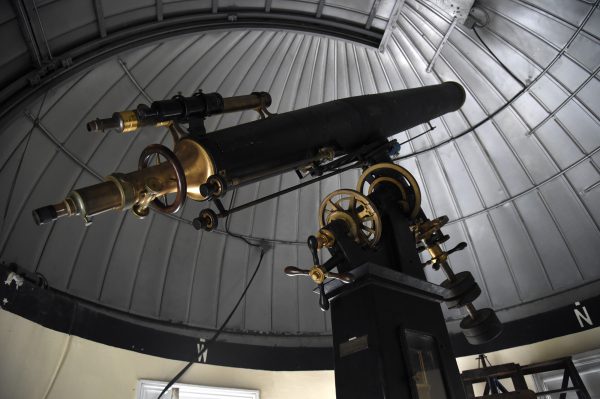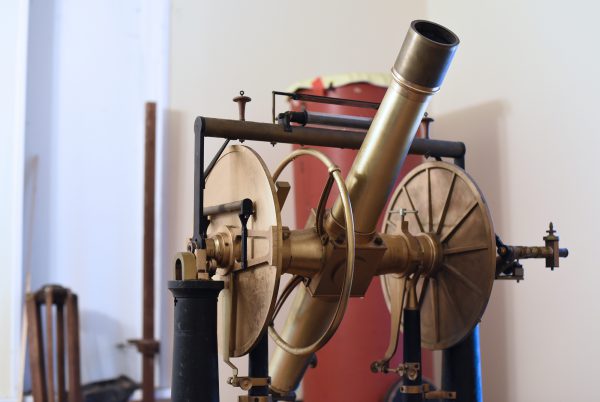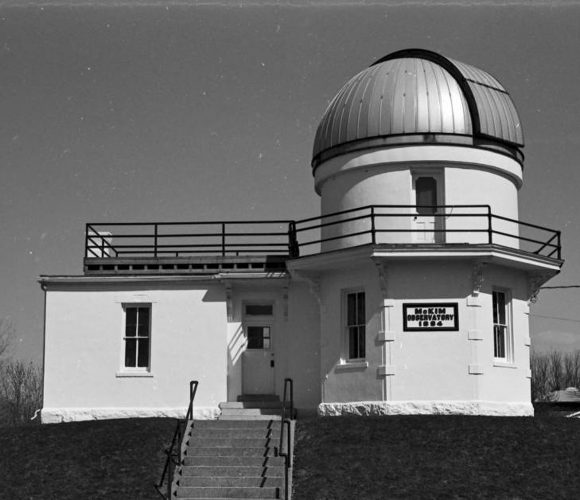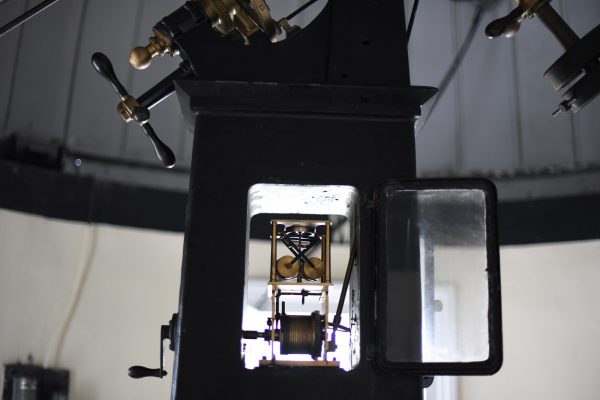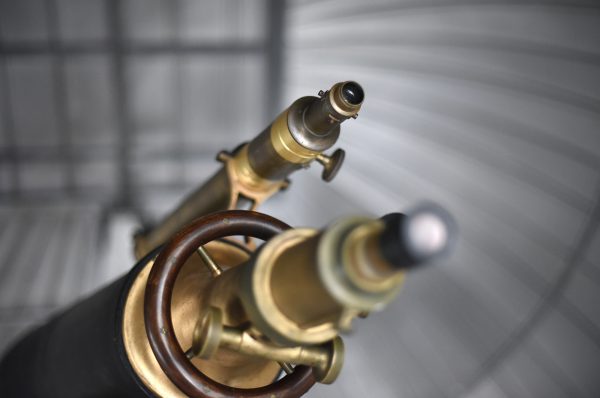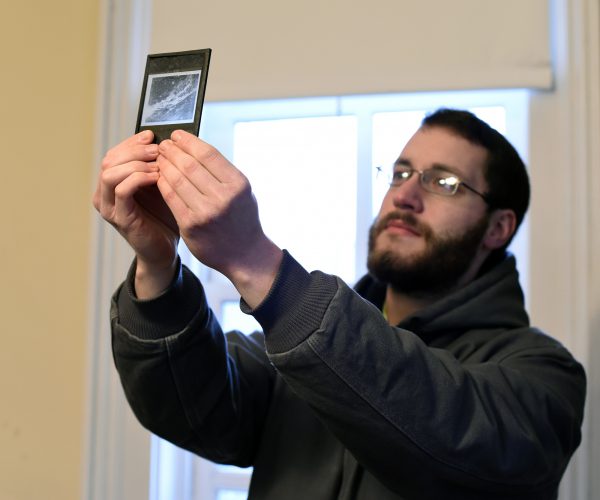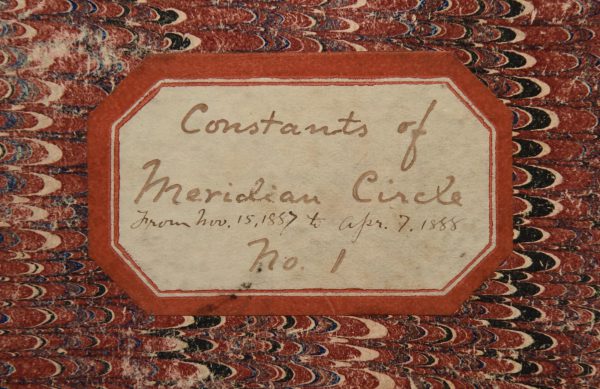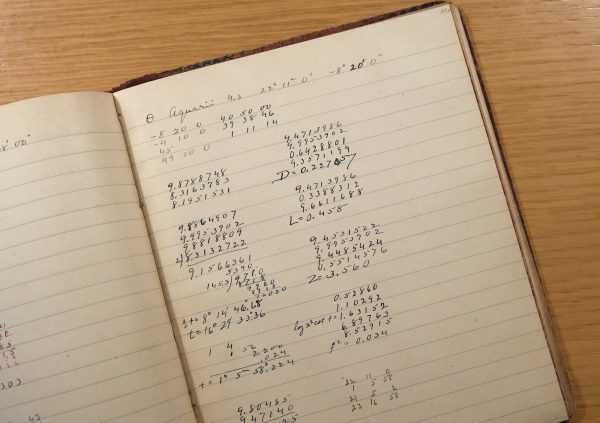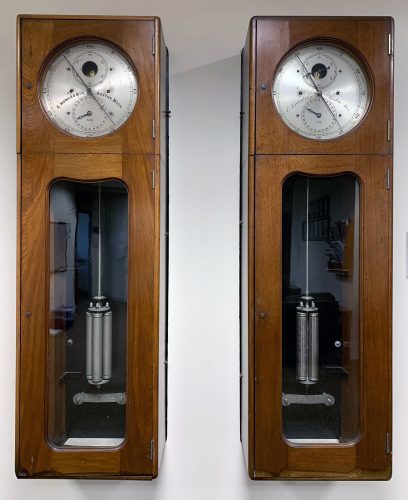Visiting McKim Observatory in Greencastle is like both blasting into space and going back in time. From 1884 to today, from amateurs to professionals, stars and planets can be seen through the lens of this observatory’s magnificent telescope. The observatory is part of DePauw University.
On a clear night, wind your way past the porthole windows and up the spiral oak staircase. At the top of the staircase is the observatory’s “pride and joy” – an 1885 Clark Refractor telescope. The telescope, with its 12-foot focal length and original 9.53-inch objective lens, offers exceptional views. Stunning sights of the moon, cloud features of Saturn, Jupiter, the Orion Nebula, and other celestial bodies delight and amaze.
DePauw graduate Thomas Grier found his passion for astronomy as a student. “I didn’t know anything about astronomy when I came to DePauw. I never looked through a good telescope.” Grier helps out at McKim as part of his duties as Physics Lab Manager.
“They don’t make ’em like this anymore,” he says of the Clark telescope. “Everything in here is wood and metal and glass. Your telescope is only as good as the glass you have on it.”
Original Equipment
The Clark telescope’s 9.53-inch objective lens by Alvin Clark and Sons of Cambridge, Massachusetts is “superb.” The original brass finder scope and ladder to focus the telescope are still in the “equatorial room.” The telescope sits on a cast-iron pier on top of a masonry pier on top of a four-foot layer of clay.
The observatory houses a beautiful brass meridian transit telescope by Fauth and Company. This telescope and its corresponding chronograph can make extremely precise measurements of star positions, latitudes and time. Pendulum clocks are now housed in Math Department at DePauw’s Percy L. Julian Center for Science and Mathematics.
The observatory building features a library, octagonal clock room and transit room with doors in the ceiling. The second-floor equatorial room includes an observation deck. McKim is used for classes, astronomy labs, open houses, events, and student research projects.
The brass and precision of the original instruments are exquisite. Only an Almucantor from a separate small building is missing. The observatory also houses modern telescopes, several of which can be mounted on piers in the observatory yard.
History
McKim Observatory was built in 1884. It was the first observatory built in Indiana. Washington C. DePauw, president of the board of trustees, convinced his friend Robert McKim to donate $8,000 to build and equip an observatory. McKim agreed, and the trustees added $2,000 to facilitate the best quality facility.
Meticulous journal records of Dr. Wilbur Brown, head of Mathematics and Physics, are in the DePauw University Archives. The collection includes several scientific logs on constants, calculations, meridian circle observations and weather, along with a few original poems.
Notable alumnus Dr. Joseph P. Allen IV, DePauw University class of 1959, became a scientist-astronaut for NASA in August 1967. Originally from Crawfordsville, IN, he flew on two space shuttle missions (Columbia and Discovery). Listen to his TEDxSonomaCounty talk and see his wonderful photographs from space.
McKim Observatory was placed on the National Register of Historic Places in 1978. In 2019 the National Park Service added statewide significance to the building.
Visiting McKim Observatory
Visit McKim Observatory during Open House hours. There is no charge. Hours are canceled when viewing conditions are poor. The observatory is located in a residential neighborhood not far from the DePauw University campus. (Note: no restrooms)
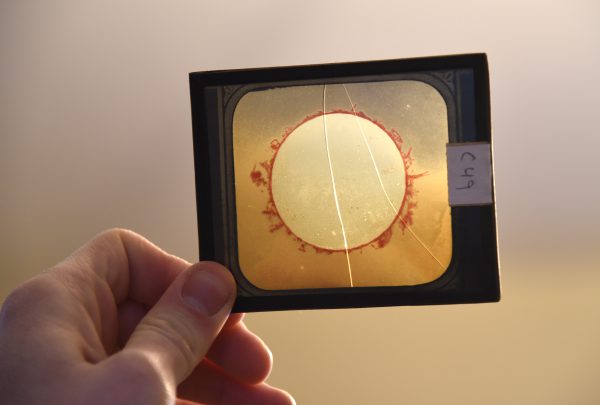 A glass slide of the sun, from the Library collection
A glass slide of the sun, from the Library collection
Click here to see other ways to explore space without leaving Indiana.
